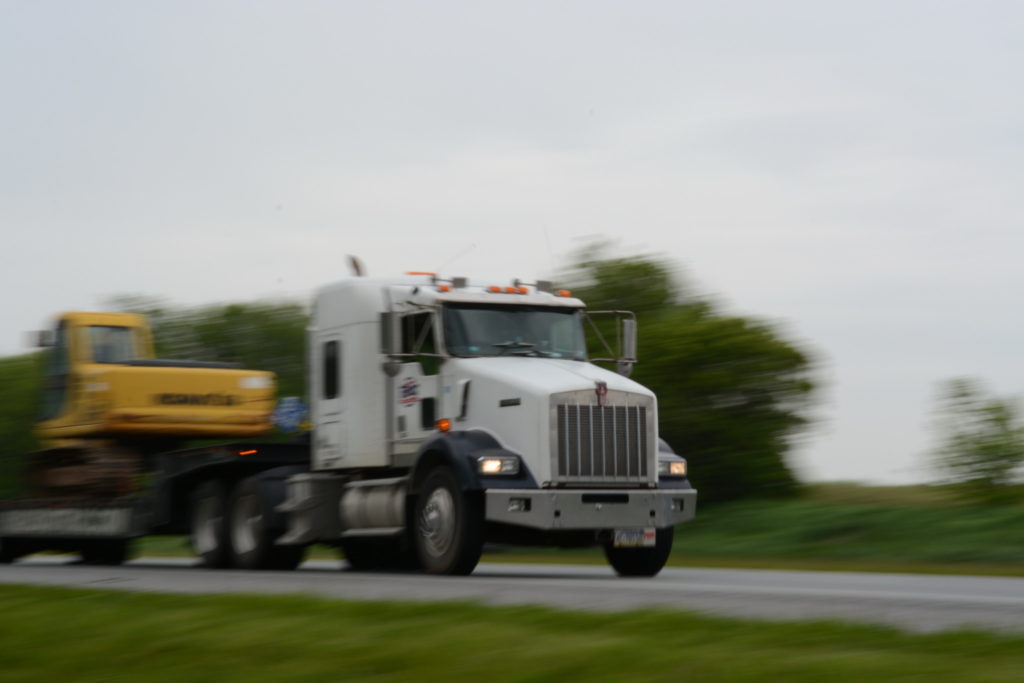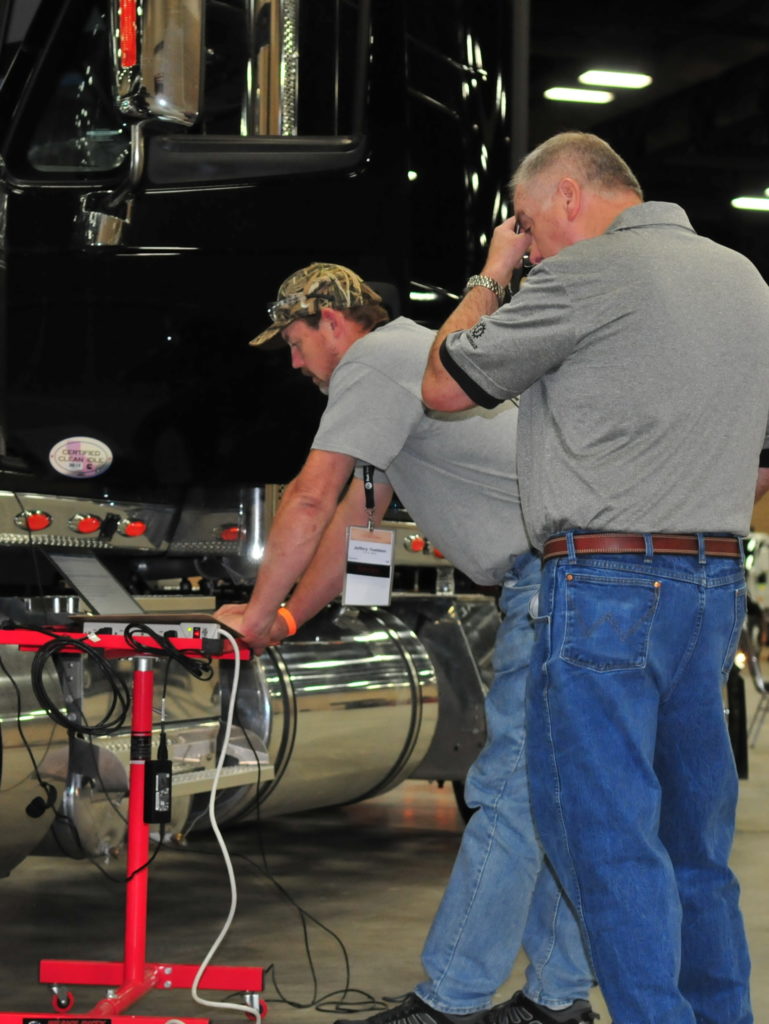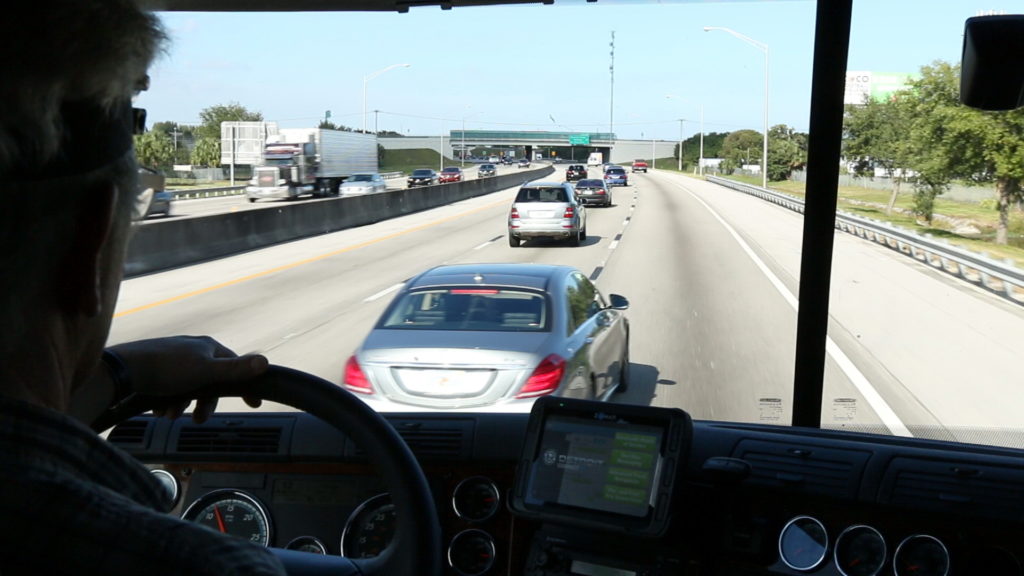Modern engines mix brains with the brawn
Smart powertrains are nothing more than modern extensions of what the best drivers did back in the day when everything was mechanical, and electronics were limited to CB radios. I have to say, in all modesty, it has taken a long time for the technology to catch up, but it now leaves even the best drivers in the dust.
What drivers could do by their own wits is now far exceeded by the micro-precise adjustments and finely tuned calibrations that electronic controls can deliver. The gains in performance and efficiency are stunning, but they are still based in good old-fashioned sound driving principles.

Back in my driving days, when traveling over the Three Sisters on I-80 in Wyoming, or nearly any other significant hill, drivers with fleets that had locked-down speed limits of 55 mph would descend the hills with the brakes on all the way down, not daring to exceed 55 by even one mile-per-hour.
They burned their brakes all the way down and created traffic mayhem as their under-powered trucks crawled up the other side. Meanwhile, drivers who weren’t living under the speed-limited sword of Damocles let the trucks roll out a little to preserve momentum and reduce brake wear — OK, and to make a little time. That’s exactly what the predictive cruise control and neutral-coast features do for drivers today, with the added advantage of some electronic oversight.
“Features like cruise-brake overspeed allows customers to control runout speeds on negative grades,” notes Volvo Trucks powertrain marketing manager John Moore. “The customer can set the runout speed a little higher than cruise speed to take advantage of the momentum coming off a hill without the driver letting it run way over the set speed. Also, predictive cruise works in conjunction with Eco-Roll to disengage the drivelines faster when no driveline load is experienced, again, to take advantage of momentum with the parasitic engine drag.”
Features such as predictive cruise control use GPS and terrain maps to read the road ahead and plan acceleration, gear shifts and engine brake applications to keep the truck rolling as efficiently as possible without unnecessarily extending trip times. On an uphill grade, for example, the GPS will tell the engine it’s approaching a mile-long 3% grade. Based on the weight of the truck, the engine may calculate it can climb that hill without a downshift. But on a 1.5-mile hill, if the engine determines it might need a downshift midway up, it may make the downshift before it hits the hill to avoid shifting on the hill and losing momentum.
The various algorithms built into the ECMs favor fuel efficiency in many cases, but they can be programmed to lean towards performance if that’s what the operator wants. In the old days, a fleet might give a driver a high-powered truck and hope they use the power responsibly. While a driver can still override some of today’s programmed shifting and acceleration parameters, they usually don’t because it’s not worth the effort. It’s simply easier to sit there and let the computers do the thinking.
“When I think of smart powertrains like Cummins ADEPT, we have provided customers the ability to customize their powertrain for its particular use,” says RaNae Isaak, Cummins powertrain TCO and consultancy leader. “ADEPT can provide electronic decisions to the powertrain that can at times make better decisions regarding efficiency than the operator can.”

Better torque management
Perhaps one of the most beneficial examples of smart powertrain thinking is downspeeding — running at very low engine rpm at the cruise speed to reduce fuel consumption. It would not have worked back in the days of mechanical engines and manual transmissions even though some variation on the gear-fast/run-slow concept was popular. Drivers would have been intensely unhappy with the feel of the engine at very low rpm, so they would have likely run a gear or two back, or cruised at 80 mph or more as the gear sets allowed. Either way, the fuel savings would have been negated.
When cruising at 1,100 rpm, the question of whether or not to downshift on an uphill grade is a delicate one. Drop too low in the torque band and it feels like someone turned off the key. But letting the engine pull down to 1,000 or even 900 rpm is fine if the engine knows that relief is just ahead. Good drivers would watch the road ahead and predict if a shift was needed. Predictive cruise does that now, adding the eyes of GPS to the powertrain, letting it hold a gear as long as possible — or to know when to give up and downshift earlier.
Options like Volvo’s Dynamic Torque can manage torque under different load conditions. When lightly loaded, below 65,000 lb., torque is reduced on acceleration to reduce fuel consumption and reduce driveline wear when extra power isn’t needed, such as when bobtailing or empty. For heavier-haul applications, programming allows the transmission to lockout overdrive and keep it in direct. This enhances performance when heavy with a minimal fuel penalty. In effect, a single engine can be programmed to perform at its best under quite different load conditions.
“Customers can tailor the drive mode software to match their fuel economy or performance requirements,” says Moore.
Most engine makers offer dual-torque configurations, too. The lower torque setting is active in the lower gears where high torque output isn’t needed, but available in the higher gears. This eliminates the need to over-spec’ the driveline, which keeps down cost and weight.

The safety card
Adaptive cruise control is now a popular option for fuel saving and safety benefits. Using radar- or camera-based forward object detection, adaptive cruise control sets a minimum following distance (sometimes adjustable by the driver, sometimes not) to help prevent rear-end collisions. It’s also useful for minimizing fuel-stealing brake applications by drivers who do get in too close to the preceding vehicle.
“Detroit’s Intelligent Powertrain Management (IPM) knows the route ahead and will accelerate, preselect gears, eCoast and brake the engine to maximize efficiency,” says Kelly Gedert, director of product marketing at Freightliner and Detroit. “Using preloaded terrain maps, IPM will adjust the following distance to ensure the truck is carrying the most efficient momentum into road conditions ahead.”
Adaptive cruise control throttles up or down and coasts in an effort to maintain a steady road speed and avoid abrupt changes in power demand. When coupled with an advanced driver assistance systems (ADAS) such as Detroit Assurance 5.0, the engine and transmission can control vehicle speed, following distance and the application of service brakes when necessary, even down to a full stop.
Smart powertrains have opened a number of doors to fleets and drivers that improve just about everything: fuel efficiency, performance, safety, and operating costs. In effect, a fleet can buy a single make and model of engine (which is good for serviceability, parts inventory and technician familiarity), but program them for different applications, capitalizing on different performance parameters as required. In addition to the high-level options, there are dozens of individual parameters than can be adjusted to suit the fleet’s needs. These are often overlooked in favor of the default settings, says fuel economy whiz-kid, Joel Morrow of Ploger Transportation.
“It can take a while to go through them all, and the dealer can really help with that,” he says. “Once you dial in a setting for a particular application, you can save the setting and import them to other trucks as well. But beware, sometimes a factory update can wipe the changes and restore the defaults. You have to watch for that.”
Truck and engine makers are always updating the technology and adding new features.
“In order to keep offering industry-leading fuel economy to International’s customers, advanced engineering teams identify which technologies can provide fuel economy improvements, with the right tradeoffs in terms of uptime, weight, serviceability, cost and more,” notes Jim Nachtman, heavy-duty marketing director at Navistar. “There are many areas of innovation and continued optimization. Reducing drag on the engine with variable size pumps, further downspeeding of engines, improved optimization with the transmission, and aftertreatment operation refinements are just some of the areas where fuel efficiency gains come from.”
None of that was possible with mechanical engines and manual transmissions. It’s fair to say that smart powertrain programming has made possible the near doubling of engine fuel efficiency over the past two decades, and all indicators suggest even more gains are on the horizon.
Have your say
This is a moderated forum. Comments will no longer be published unless they are accompanied by a first and last name and a verifiable email address. (Today's Trucking will not publish or share the email address.) Profane language and content deemed to be libelous, racist, or threatening in nature will not be published under any circumstances.